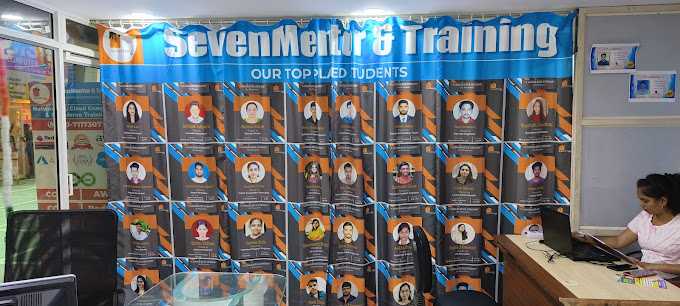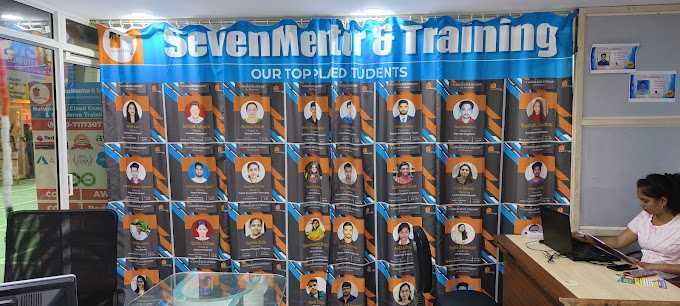Name- SevenMentor | Python | Data Science | SQL | Django Training Institute
Address- KUNAL PLAZA, SevenMentor, 3rd Floor, off Mumbai Pune Highway, Pimpri-Chinchwad, Maharashtra 411019
Phone- 02071173143
https://goo.gl/maps/xjBadDwhj8YXDVA4A
Python classes in Pune


Salesforce Data Security Features
Salesforce provides a comprehensive suite of security features designed to protect data at every level. Here are some key components of Salesforce’s security infrastructure:
1. Authentication and Identity Management
Multi-Factor Authentication (MFA)
Salesforce supports multi-factor authentication, adding an extra layer of security by requiring users to verify their identity through a second factor, such as a mobile device or security token.
Single Sign-On (SSO)
Single Sign-On allows users to access multiple applications with a single set of login credentials, simplifying the login process while maintaining robust security controls.
2. Access Control
Role-Based Access Control (RBAC)
Salesforce uses role-based access control to ensure that users have access only to the data necessary for their job functions. Administrators can define roles and permissions, controlling who can view, edit, or delete specific data.
Field-Level Security
Field-level security settings allow administrators to restrict access to specific fields within a record, ensuring that sensitive information is only visible to authorized users.
3. Data Encryption
Encryption at Rest
Salesforce encrypts data at rest using advanced encryption standards. This ensures that data stored in the Salesforce database is protected from unauthorized access.
Encryption in Transit
Data transmitted between the user’s device and Salesforce servers is encrypted using TLS (Transport Layer Security), protecting it from interception and tampering during transit.
4. Monitoring and Auditing
Event Monitoring
Salesforce’s Event Monitoring feature tracks user activity and system events, providing detailed logs that help administrators detect and respond to suspicious activity. Salesforce Course in Pune. https://www.sevenmentor.com/sa....lesforce-training-in
Field Audit Trail
The Field Audit Trail feature allows businesses to track changes to field values over time, providing a detailed audit log for compliance and security purposes.
5. Data Loss Prevention (DLP)
Salesforce offers Data Loss Prevention tools to help identify and prevent the exposure of sensitive information. These tools can scan data for predefined patterns, such as credit card numbers or social security numbers, and trigger alerts or actions when such data is detected.
6. Secure Development Practices
Salesforce employs secure development practices, including regular code reviews, vulnerability scanning, and penetration testing, to ensure that the platform itself is secure from vulnerabilities.
Best Practices for Ensuring Salesforce Data Security
While Salesforce provides robust security features, it is essential for businesses to adopt best practices to ensure comprehensive data protection.
1. Regularly Review and Update Security Settings
Periodically review and update security settings to ensure they align with current business needs and security standards. This includes reviewing user roles, permissions, and field-level security settings.
2. Implement Strong Password Policies
Enforce strong password policies requiring complex passwords that are changed regularly. Consider using password management tools to ensure compliance with these policies.
3. Enable Multi-Factor Authentication
Enable multi-factor authentication for all users to add an extra layer of security. This helps prevent unauthorized access even if login credentials are compromised.
4. Conduct Regular Security Audits
Conduct regular security audits to identify and address potential vulnerabilities. Use Salesforce’s monitoring and auditing tools to track user activity and detect suspicious behavior.
5. Educate and Train Employees
Educate employees about the importance of data security and provide training on best practices for using Salesforce securely. Ensure that employees are aware of common security threats, such as phishing attacks, and know how to respond to them.
6. Implement Data Backup and Recovery Plans
Regularly back up Salesforce data and implement a robust data recovery plan. This ensures that data can be restored in case of accidental deletion, data corruption, or a security incident.
7. Limit Data Access
Limit data access to only those who need it for their job functions. Use role-based access control and field-level security settings to restrict access to sensitive information.
SevenMentor | CCNA | AWS | Salesforce | Linux Training Pune
GMB Url : https://maps.app.goo.gl/ptN2GECz7pB7vR9f7
Address: 3rd Floor, wing A and B, KUNAL PLAZA, Office number 39, off Mumbai Pune Highway, Pimpri-Chinchwad, Maharashtra 411019
Contact No : 02071173121

